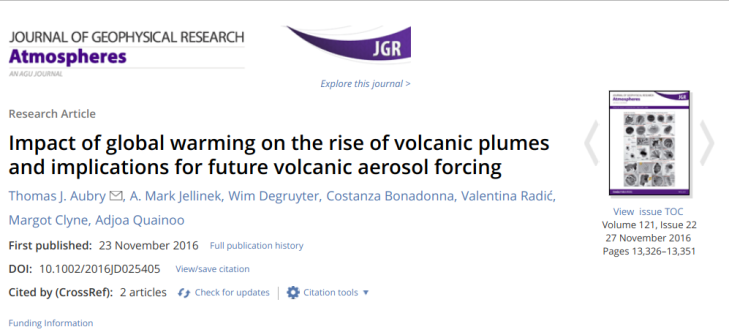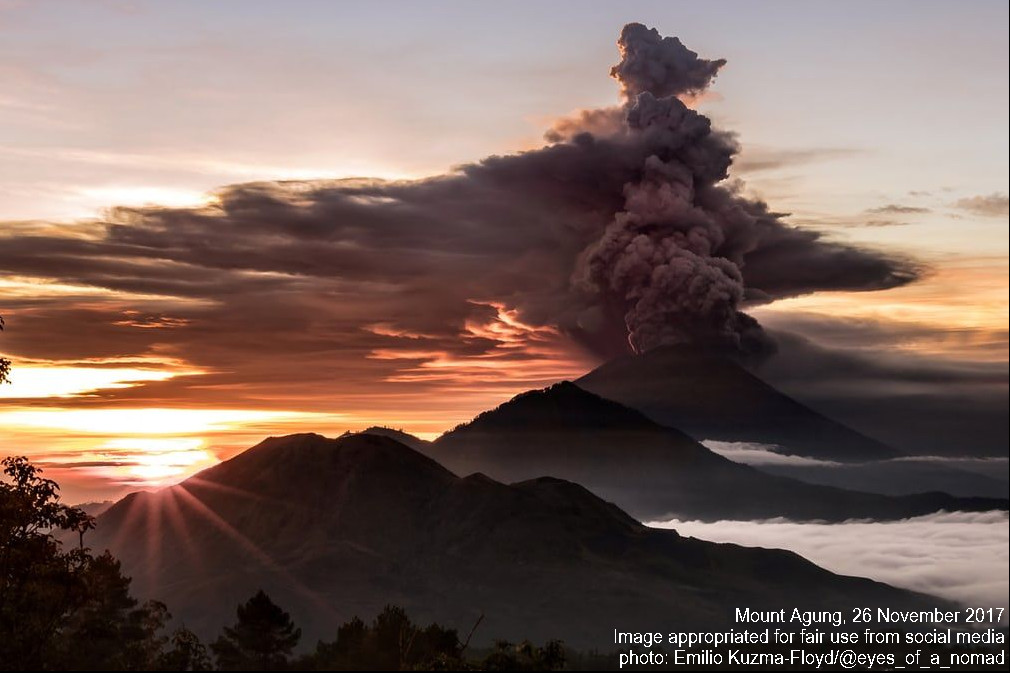An interesting review detailing the inter-linkage between climate change and volcanic activity hit my google scholar alert inbox. Cooper et al. (2018) discuss not only how large explosive volcanic eruptions might impact surface radiative forcing via sulfate aerosols scattering incoming sunlight, but also how symptoms of the changing climate might influence the frequency of volcanic eruptions.

The story goes like this: as the cryosphere is destabilized, landlocked ice sheets will melt. In places with very thick ice sheets, this will produce a very abrupt (on a geological timescale) shift in lithospheric pressure loading. As one might infer from figure 1, below, such a shift might significantly enhance the fraction of melt partitioning in the vicinity. More melt, of course, translates to more frequent volcanism, though there isn’t an instantaneous response — it takes centuries for the new magma to reach the surface.

Figure 1: Example of decompression melting. An abrupt change in surface loading, (e.g., isothermal decompression) provokes a phase transition. (adapted from Arham Bahar / Universiti Malaysia Kelantan)
As I was reading this review I was reminded of a work relating another lesser-known link between climate change and volcanism. Aubry et al. (2016) explore how climate change might influence eruption column height.

Initially, a volcanic plume may be considered in loose analogy to a molecular beam — the expansion of a high pressure gas into a vacuum through an aperture. The expanding volcanic gas carries with it some momentum, thrusting itself upward. At some point, friction with (and entrainment of) the surrounding atmosphere counters this momentum. Depending on the strength of the eruption, the gas thrust region may extend from the crater rim to several km above the crater rim. Above the gas thrust region, convective thrust drives vertical transport within the eruption column. Air parcels within the eruption column are considerably buoyant and will convect to their point of neutral buoyancy. Finally, at this point, as in a cloud top, the parcels will diffuse horizontally, forming the umbrella cloud.
The maximum height of an eruption column is limited by the amount of heat transferred to the atmosphere per unit time (power, Watts), as it is convection which ultimately drives this process. Ultimate column height can be expressed according to the following equation, in which N is the the Brunt–Väisälä frequency, M is the mass ejection rate, and horizontal transport coefficients k1 + k2 = 1.
The Brunt–Väisälä frequency is dependent on the lapse rate (), the specific heat capacity
, the gravitational constant g, and the zonal temperature T.
In order for a volcanic eruption to influence global climate (and stratospheric chemistry), its eruption column must penetrate the tropopause (defined as the point of inflection in the lapse rate) — and climate change is expected to produce changes in both the tropopause height and the lapse rate. In the future, in most regions, the Brunt–Väisälä frequency will decrease. In turn, the plume height for any given eruption mass ejection rate will be shorter. Aubry et al. (2016) conclude that stratospheric input of volcanic gases will be less frequent in a future climate change scenario.

Figure 2: Lapse rate () as a function of year within the RCP 6.0 emissions storyline. Note that lapse rate increases as the climate changes. (Klobas thesis 2018)
Finally, since we’re on the topic of unexpected climate-change/volcanism interactions, I’d like to bring attention to a work by Laakso et al. (2016) in which they simulate what might happen if a large volcanic eruption were to occur during albedo modification geoengineering by stratospheric aerosol injection –aka solar radiation management (SRM).

Figure 3 below provides the total aerosol burden of sulfate in Tg. For controls, they simulate a volcano-only scenario (black solid), a SRM-only scenario (black dashes), the sum of the SRM-only and volcano-only scenarios (magenta dashes). There are two experimental perturbations: SRM is immediately stopped when the volcano erupts (blue solid) and SRM continues as normal despite the volcanic eruption (red solid).

Figure 3: sulfate burden vs time elapsed after volcanic eruption. (adapted from Laakso, A., et al. “Radiative and climate impacts of a large volcanic eruption during stratospheric sulfur geoengineering.” Atmospheric Chemistry and Physics 16.1 (2016): 305-323.)
Surprisingly, the time required to recover to the pre-eruption sulfate burden during SRM is halved relative to the volcano-only case, even if the SRM program continues as normal after the eruption. Why? Because coagulation processes will produce larger aerosols more quickly, reducing the lifetime of sulfate aerosol via gravitational sedimentation. They go on to show that the cessation of SRM following a volcanic eruption could cause very rapid surface warming as a result of reduced aerosol lifetimes. The authors obviously explore more than this — and it’s open access — so I encourage you to read it yourself for more info.

